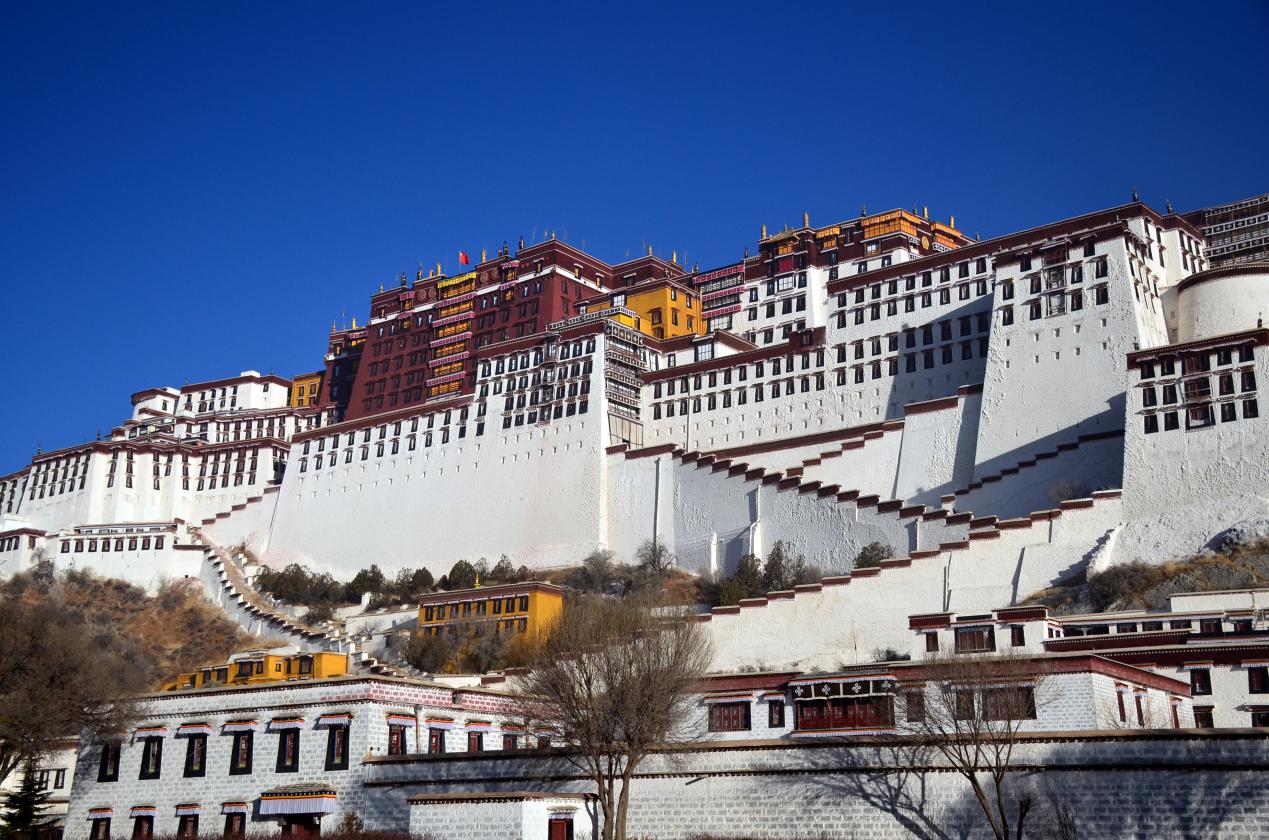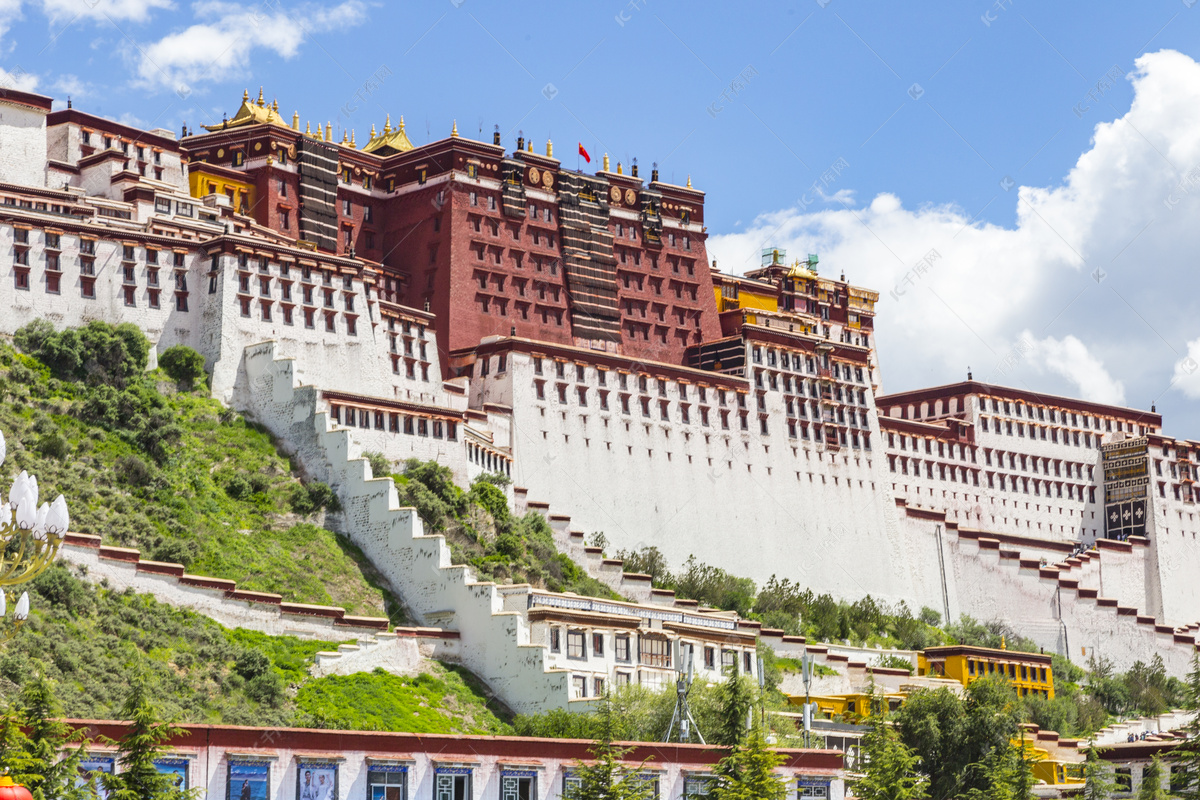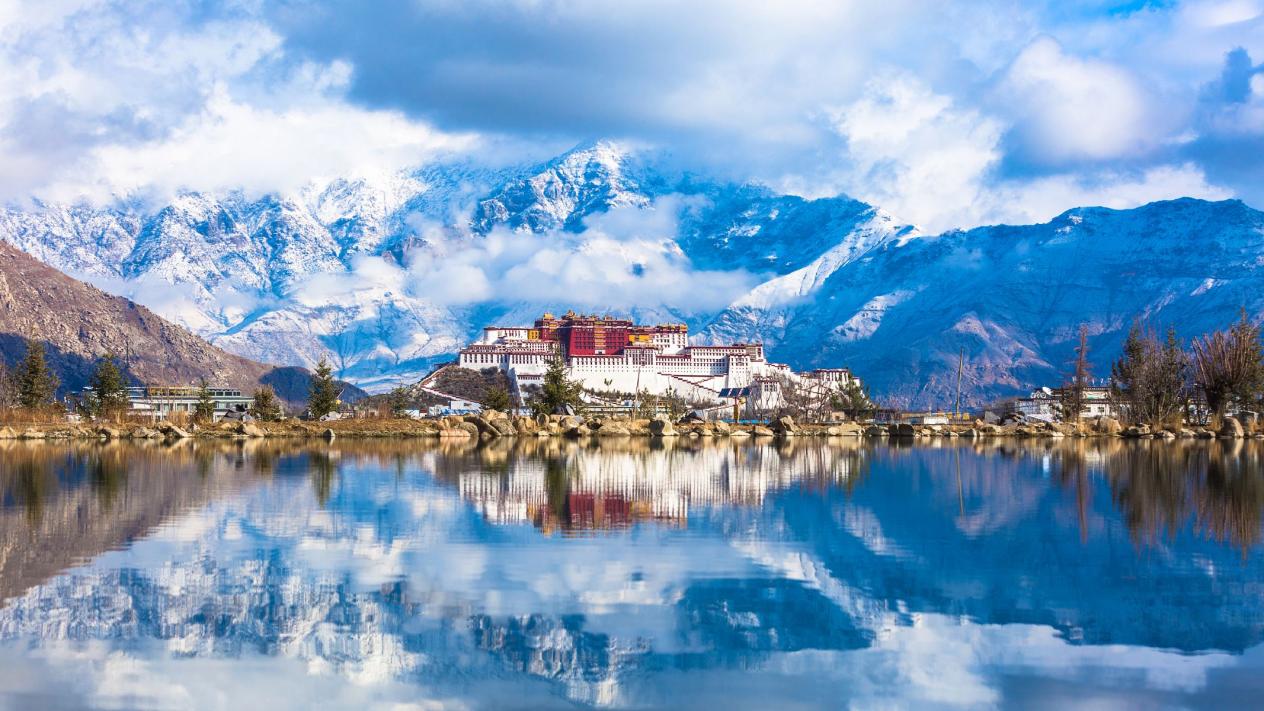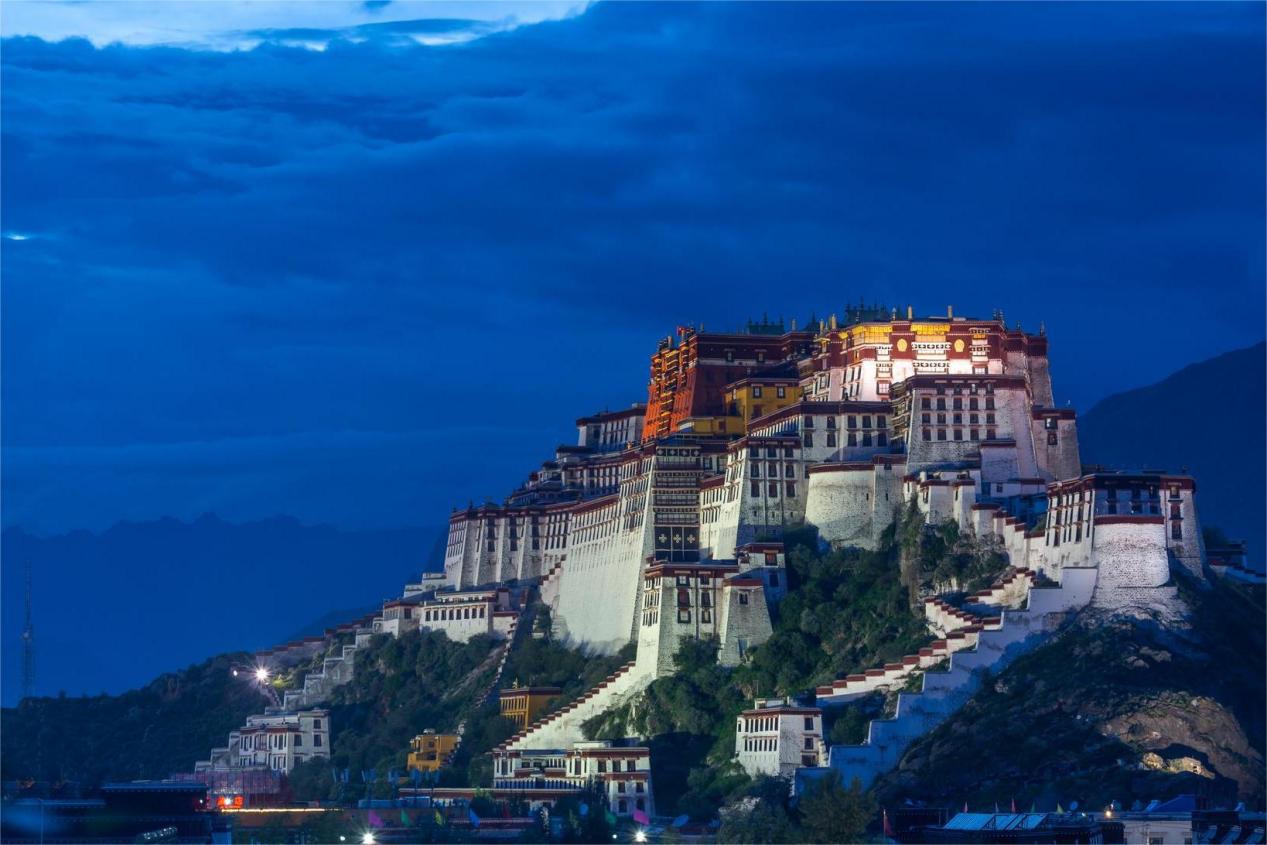The Potala Palace, perched majestically on Marpo Ri Hill in Lhasa, Tibet, is one of the most iconic landmarks of Tibetan architecture and culture. Standing at an elevation of over 3,700 meters (12,100 feet), it is the highest palace in the world, overlooking the Tibetan capital and symbolizing both the spiritual and political heart of Tibet. With a rich history spanning over 1,300 years, the Potala Palace remains a powerful emblem of Tibetan Buddhism and a cultural heritage site recognized by UNESCO.

Historical Background
The Potala Palace's origins date back to the 7th century during the reign of King Songtsen Gampo, who constructed the original palace as a gift for his bride, Princess Wencheng of the Chinese Tang Dynasty. This marriage was a diplomatic union aimed at fostering peace between Tibet and the Tang Empire, symbolizing the early cultural exchange between Tibet and mainland China. At the time, the structure was more modest than the grand edifice we see today.
The palace as it stands today was largely expanded and reconstructed in the 17th century under the leadership of the Fifth Dalai Lama, Lozang Gyatso. It was during this period that the Potala became the spiritual and political center of Tibet. The palace served as the residence of the Dalai Lamas, the spiritual leaders of Tibetan Buddhism, until the 14th Dalai Lama fled to India during the Tibetan uprising in 1959.
Architectural Marvel
The Potala Palace is an architectural masterpiece, blending Tibetan, Chinese, and Indian design elements. It is divided into two main sections: the White Palace and the Red Palace.
- The White Palace (Potrang Karpo) served as the administrative building and the residence of the Dalai Lamas. It contains the living quarters, offices, and assembly halls where important political decisions were made.

- The Red Palace (Potrang Marpo), located at the highest point of the structure, is dedicated to religious and spiritual purposes. This part of the palace houses numerous chapels, shrines, and stupas containing the remains of several Dalai Lamas, most notably the Fifth Dalai Lama, whose tomb is a monumental structure adorned with precious stones and gold.
Standing at 13 stories high, with more than 1,000 rooms and countless halls and chapels, the palace complex is an enormous structure. The exterior's striking red and white hues are a signature feature of Tibetan religious architecture, symbolizing the intertwining of secular and spiritual power. The palace is constructed from wood, stone, and mud bricks, and it blends harmoniously with the surrounding landscape.
Religious Significance
As a sacred site for Tibetan Buddhism, the Potala Palace houses numerous invaluable religious artifacts, scriptures, and paintings. The Red Palace is the epicenter of religious activities, with countless statues of Buddhas, bodhisattvas, and other deities worshipped by Tibetan Buddhists. The intricate murals adorning the walls tell the stories of Tibetan history, Buddhist teachings, and the lives of important religious figures.

One of the most revered parts of the Potala Palace is the Jokhang Chapel, where pilgrims from across Tibet and beyond come to pray and offer their devotion. The pilgrimage to the Potala is considered one of the most sacred journeys for Tibetan Buddhists, who often make their way to the palace by prostrating themselves on the ground for miles.
Cultural Legacy and Preservation
The Potala Palace is not only a religious and political symbol but also a cultural treasure that embodies centuries of Tibetan heritage. In 1994, it was designated a UNESCO World Heritage Site in recognition of its outstanding cultural and architectural significance. This listing helps ensure that the palace is preserved for future generations.
Efforts have been made by both Chinese authorities and international organizations to maintain and restore the palace’s structural integrity, as its location at such a high altitude makes it susceptible to weathering and environmental damage. Additionally, the palace is carefully protected to preserve its historic artifacts and religious relics.

The Potala Palace in Modern Times
Today, the Potala Palace remains a prominent tourist destination, attracting visitors from around the world who are captivated by its architectural grandeur and spiritual atmosphere. It stands as a testimony to Tibet’s unique culture and history, offering a glimpse into the lives of the Dalai Lamas and the rich traditions of Tibetan Buddhism.
Despite its current role as a tourist attraction and museum, the Potala Palace continues to hold deep spiritual importance for Tibetan Buddhists. Each year, pilgrims make the arduous journey to Lhasa to visit the palace, leaving offerings and praying in its sacred halls.
Conclusion

The Potala Palace is more than just an architectural wonder; it is a symbol of Tibetan culture, spirituality, and resilience. From its early origins as a royal palace to its development into a seat of political and religious power, the Potala has played a crucial role in shaping Tibet's history. As a UNESCO World Heritage Site, it serves as a reminder of the richness of Tibetan culture and the enduring significance of Buddhism in the lives of the Tibetan people.
Through its grandeur and spiritual significance, the Potala Palace continues to inspire awe, standing as a testament to the power of faith, tradition, and human ingenuity at the roof of the world.



